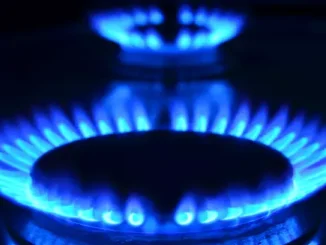
November 14, 2023
Data source: U.S. Energy Information Administration
Relatively full natural gas inventories in the United States and Europe and expanded global liquefied natural gas (LNG) export and import capacity have improved the likelihood that global gas supply is sufficient to meet demand in the 2023–24 winter season (November–March), according to our recently released Winter 2023–24 Global LNG Analysis. But extreme weather and supply interruptions both pose risks to this balance.
Expanded global LNG export and import capacity will make more natural gas available this winter season. We expect approximately 4.0 billion cubic feet per day (Bcf/d) of additional and returning LNG export capacity to be available during winter 2023–24. The return to service of Freeport LNG in the United States has already boosted global LNG exports by 2.0 billion cubic feet per day (Bcf/d) so far this year. We also estimate global LNG import capacity has expanded by 13% (18 Bcf/d) so far this year in both Europe and Asia, and we expect more import projects to enter operation in Germany and China this winter.
Natural gas consumers are also beginning this winter season with more natural gas in storage than during last winter. Europe’s natural gas storage inventories are almost full at the start of 2023–24 withdrawal season, with 3,657 billion cubic feet (Bcf) (99% of capacity) stored in Europe (EU-27) as of October 31, 2023, according to data from Aggregated Gas Storage Inventory (AGSI+). We estimate that volume represents 65 days of natural gas consumption at peak five-year (2019–23) winter usage rates and 84 days of natural gas consumption at rates reached last winter. The on-site storage capacity at regasification facilities in Japan and South Korea has also been consistently full this year. In the United States—an important global LNG supplier—storage inventories exceeded last year’s inventories by 8% as of October 27, 2023.
LNG front-month futures prices this year have been consistently lower than last year, chiefly in response to the increased natural gas storage inventories in Europe. Global natural gas prices in East Asia and at the Title Transfer Facility (TTF) in Europe are down more than 50% compared with this time last year, averaging close to $15.00 per million British thermal units (MMBtu), according to data from Bloomberg, L.P.
Data source: U.S. Energy Information Administration, U.S. Department of Energy, Bloomberg Finance, L.P., Gas Infrastructure Europe, Aggregated Gas Storage Inventory (AGSI+), International Group of Liquefied Natural Gas Importers (GIIGNL), and CEDIGAZ
Note: Fcst=forecast. The 2022–23 historical prices are average daily near-month futures prices. The 2023–24 prices are average monthly futures prices as of October 27, 2023. Brent crude oil price was converted using energy equivalence of 5.691 million British thermal units per barrel. Storage stocks in the United States and Europe (EU-27) are as of October 27, 2022, and October 27, 2023. Europe’s storage stocks include EU-27 countries and do not include storage stocks in the United Kingdom, Serbia, and Ukraine.
Balance Risks
Unexpected surges in demand or unplanned supply outages could affect both price and global natural gas balances. The pace of China’s natural gas demand recovery remains a key uncertainty. Additionally, severe cold weather over several weeks or months in Europe or Asia could drive rapid increases in global LNG spot prices as buyers compete for spot LNG cargos. Cold weather in both regions simultaneously would compound the effect.
Further unplanned outages—such as from production freeze-offs in the United States, Norway, or other major natural gas suppliers—could also affect global balances, creating supply shortages and price spikes. Other supply disruptions could occur, such as a further reduction in pipeline exports from Russia transiting Ukraine, worker strikes at Australian LNG facilities, spread of the military conflict in the Middle East, or other potential unplanned outages affecting global supplies.
Principal contributors: Victoria Zaretskaya, Chris Peterson, Jordan Young, Max Ober, Greg Adams
Relatively full natural gas inventories in the United States and Europe and expanded global liquefied natural gas (LNG) export and import capacity have improved the likelihood that global gas supply is sufficient to meet demand in the 2023–24 winter season (November–March), according to our recently released Winter 2023–24 Global LNG Analysis. But extreme weather and supply interruptions both pose risks to this balance.
ENB Top News
ENB
Energy Dashboard
ENB Podcast
ENB Substack



